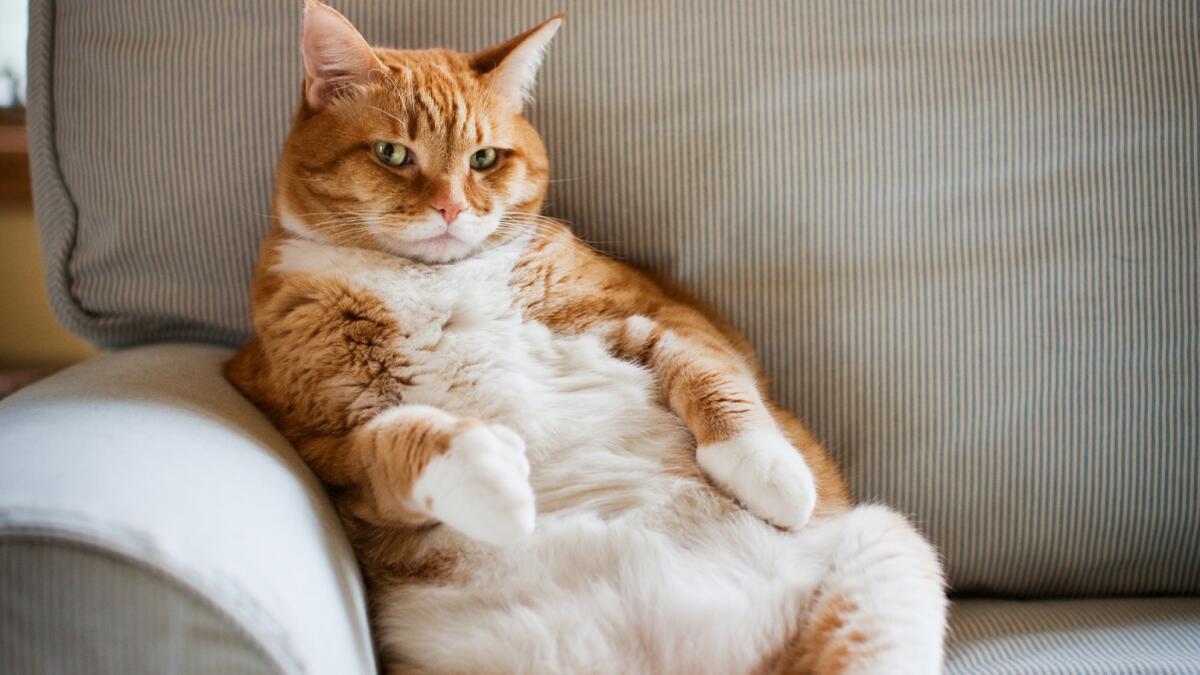Hey, fat cat: Overweight pets are unhealthy pets, vets warn

According to the latest study from the Association for Pet Obesity Prevention, over 50 percent of the nation’s cats, and dogs, are overweight. And, just as concerning, over 90 percent of their owners don’t recognize their pet is carrying around extra pounds.
Garfield is not the only fat cat around.
According to the Assn. for Pet Obesity Prevention, more than 50% of the nation’s cats and dogs are overweight. And just as concerning, more than 90% of their owners don’t recognize that their pet is carrying around extra pounds.
“People automatically think a fat cat is a happy cat,” says Ernie Ward, owner of Seaside Animal Care in Calabash, N.C. “But it’s not cute. It’s killing.”
Share your photos: Show us your pets, and tell us how you “met”
Ward founded the organization in 2005 after realizing that many veterinarians were not talking to pet owners about obesity. Ten years later, he says, vets are finally having those necessary conversations.
“It’s an emotional land mine,” Ward says. “You don’t know when you’re going to step on the wrong button because people inherently have a problem with questions [about how they’re] feeding pets because we equate love with food and treats.”
Not unlike humans, pets can face obesity because of too much food and too little exercise, says Eve Flores, a veterinarian and co-owner of DTLAvets with Leia Castañeda.
Check out the all-new L.A. Times Pets page
Overweight animals are more prone to a host of health conditions, including arthritis, high blood pressure and blindness.
Below are some suggestions from Ward, Flores and Castañeda for pet owners looking to improve pets’ health:
Annual checkups
Many pet owners do not take their dogs or cats to the veterinarian until something is wrong. “We can’t practice preventive medicine if we’re not seeing the pets,” Flores says.
Pets should be seen by the veterinarian at least once a year for the doctor to evaluate the animals — and educate the owners.
Read labels
“The most important decision a pet owner makes every day is what they feed their pet,” Ward says.
Flores encourages pet owners to look at the ingredients listed on food packages. If any of the first three items is unpronounceable or hard to understand, don’t buy it.
Calories count
“Pay attention to the amount you’re actually feeding your dog,” Castañeda says, adding that owners should be aware that treats have calories too. She also says that diet food and pet foods that are grain free or raw have become marketing tools more than healthful alternatives.
Exercise
Ward uses a simple equation to get through to his clients: “Fat equals inflammation, which equals disease which equals early death.” To avoid that, exercise is a must, he says. “It is as simple as walking your dog 30 minutes a day, interacting with your cat for five minutes three times a day.”
Flores adds that extending normal walking or play times by 10 minutes can do the trick.
MORE
Clothing essentials for the fashion-forward dog
Top 10 names for pets: No, ‘Fido’ did not make the list
Why dogs make the perfect stand-up paddle-boarding buddies
trevell.anderson@latimes.com
More to Read
Sign up for The Wild
We’ll help you find the best places to hike, bike and run, as well as the perfect silent spots for meditation and yoga.
You may occasionally receive promotional content from the Los Angeles Times.











